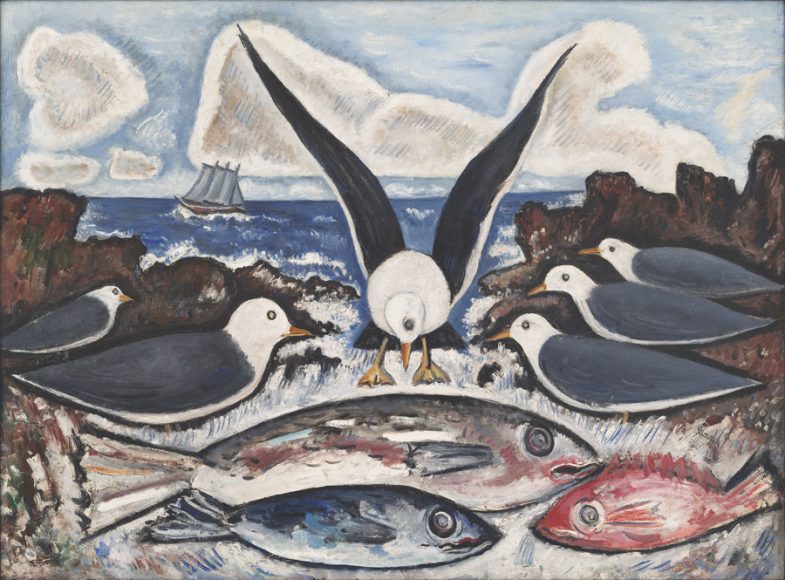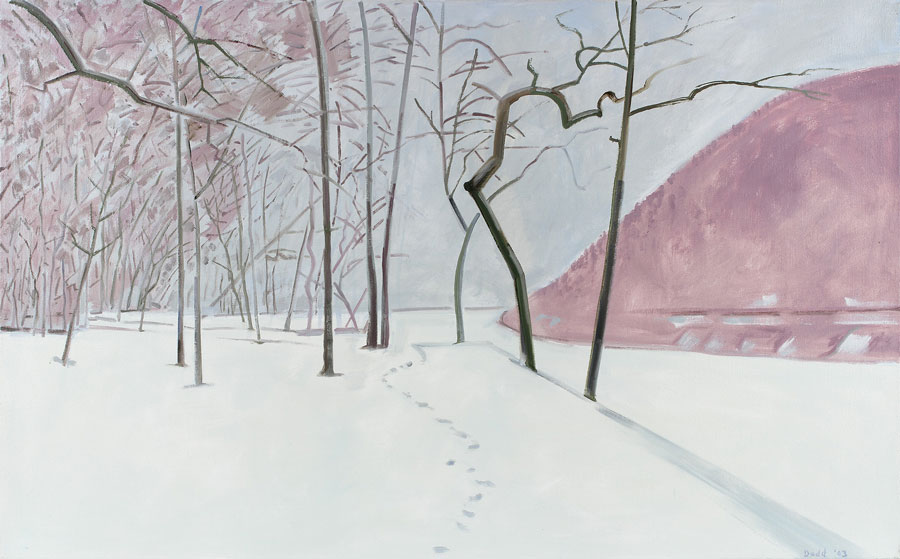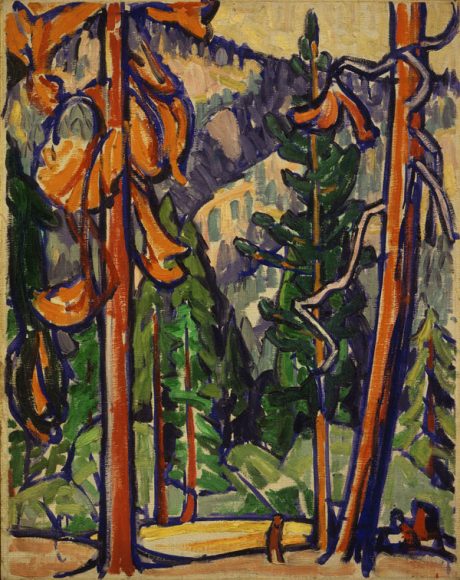In “LandEscape: New Visions of the Landscape from the Early 20th and 21st Centuries,” at the Katonah Museum of Art through June 16, viewers can immerse themselves in works from two seminal moments in art history when painters reimagined an ancient art form that has helped define our identity as a nation.
The exhibition includes roughly 30 paintings that bridge a century. The earlier works represent a revolutionary moment in the Modern art movement and are juxtaposed with those by contemporary artists who continue to evolve the genre from its humble beginnings.
Landscape painting was transformed in the mid-19th century when the practice of painting en plein air (outdoors) was made possible by the invention of paint tubes, the portable French box easel and the self-contained pochade box — to say nothing of electric light. Suddenly, artists could capture natural light and weather outside the confines of a studio by day and the newfangled electric light by night.
They included Impressionists such as Claude Monet, Edgar Degas and Pierre-Auguste Renoir, Postimpressionists like Vincent van Gogh and Fauvists like Henri Matisse.
“It’s interesting to me that artists went outside to do the painting,” says associate curator Michele Wijegoonaratna, “but were creating something that didn’t quite reflect what they were looking at.”
American artists traveling abroad observed the radical choices these artists were making in regards to light and color.
“It was a shocking thing when these artists came back from Europe,” Wijegoonaratna adds. Their paintings captured “how they felt compared to what they saw. They were more interested in the way the landscape made them feel.”
Their inspired works were shown at New York’s now famous Armory Show of 1913 where radical depictions of light and color shocked the public and ushered in the Modern art movement.
A century later, contemporary artists of the early 21st century (no longer motivated by the plein air approach) were returning to the studio where they could transform their memories of the landscape to convey spirit and emotion free from the confines of their subject.
Where the early-20th century artists were driven to the countryside as an escape from urbanization and industrialization, the artists of the early-21st century returned in part to urban landscapes and industrial environments.
Their motivations may have been different but these two eras of artists relate to each other with metaphor, flights of fancy, large-scaled mindscapes and multilayered perceptions of the landscape as felt and influenced by the artist.
Marguerite Thompson Zorach’s “Man Among Redwoods” (1932) was the impetus for the Katonah exhibit. Curator Olga Dekalo was inspired by the painting, which depicts a distinctly Californian landscape of towering trees and the dwarfed figure of a man. “It’s a romantic trope,” Wijegoonaratna says, “nature as greater than being human.” The exhibition grew from there.
In John Marin’s “Wave on Rock” (1937), a rugged seascape conveys the immense force of nature. In Marsden Hartley’s 1938 work, “Give Us This Day,” creatures of the sea and air unite in a cool palette to give the composition a spiritual quality. Conversely, Hartley’s bold, thickly applied colors and rough shapes in “Dogtown” (1934) suggest a subjective response to the wild moors of Gloucester, Massachusetts, rather than a literal representation.
“It was precisely the point not to have any Realist paintings,” Wijegoonaratna says.
Shara Hughes uses texture and a lack of perspective to depict an imagined, hallucinatory beach scene in “The Not Dark Dark Spots” (2017). And a sense of quiet pervades Lois Dodd’s “Water Gap, Last Snowfall” (2003), with its thinly applied, muted palette, stark trees and receding footprints.
As Wijegoonaratna describes in an essay: “For both the Modern and contemporary artists in this exhibition, the depiction of landscape can exist as a way to escape the boundaries of the physical environment and allow us to relate to the places we know as well as the ones that we imagine.”
Taken as a whole, these curated works provide a strong perspective on the evolution of landscape painting and how it has represented both our inner and outer worlds in new and innovative ways over the course of a century.”
For more, visit katonahmuseum.org.







